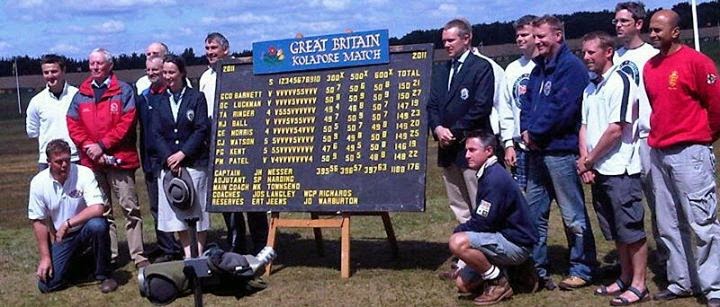 |
| The F-Coefficient setting is found in the Shot Parameters menu. |
When a shot is fired the amount and direction of muzzle movement will have a significant effect on the fall of shot. If the muzzle is moving as the shot exits the bore then the bullet will continue to move in the same direction as it flies down the range (Newton's 1st law of motion.) The slower the movement of the muzzle, the less the shot will be pushed out from the centre of hold. Bullet velocity, distance to target and other factors will also affect how big the effect is.
SCATT attempts to simulate this effect. Manipulating the F-Coefficient allows the user to tune how far the shot is thrown to simulate their discipline.
F-Coefficient Effects
The three diagrams below show the effect on the fall of the same shot with F-Coefficients of 0 (zero), 37 (the value I usually use) and 75 (the default value, which is supposed to match 50mtr smallbore.)
 |
| The effect of different F-Coefficient values on the same shot. |
Suggested F-Coefficient Values
For fullbore I generally use an F-Coefficient value of 37, which seems to correspond best to what I would expect to see during a real shoot*; however any value in the range 30 - 40 would seem to be fine to me. Note that if you want to compare different SCATT files, you should set the F-Coefficient to the same value!
That said other shooters have alternative views on what F-Coefficient setting should be used. Most of these are simply a debate between which value seems to simulate a particular discipline the best; however one alternative method is to set the F-Coefficient value to 0 (zero) and use the "speed" tab to assess individual shots. I've never tried this approach as it seems overly complicated to me, but you may prefer it.
Get that SCATT out and start doing some training!
* The best way to determine the right F-Coefficient value for fullbore would be to do combined livefire / SCATT to compare the simulated fall of shot with the real fall of shot; however as this is not recommended with the SCATT USB Professional on a centrefire rifle (SCATT's newest model, MX-02 supports this but I don't have a GBP1200 to spare at the moment to try it out!)


